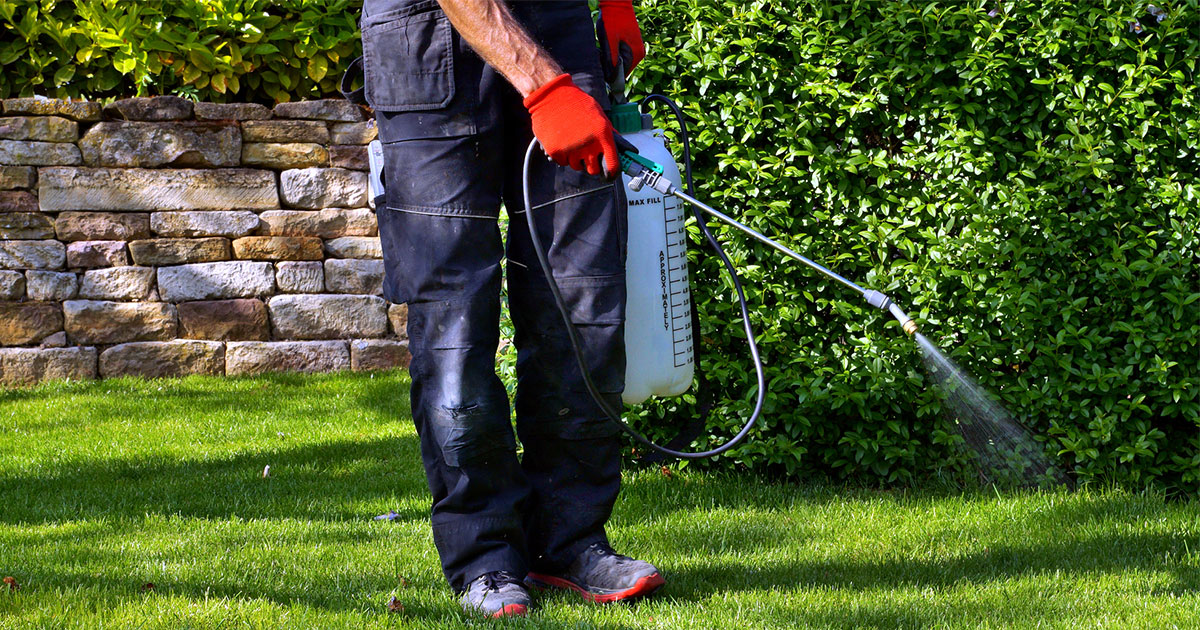
You may never have heard of a substance called glyphosate, but you may have some in your garage, basement or backyard shed. Glyphosate is the active ingredient in many herbicides, or weed killers. Since its invention in 1974, the chemical has been used in hundreds of commercial and industrial products. And the development of more herbicide-tolerant crops has resulted in a huge increase in the use of glyphosate on the nation’s farms.
Glyphosate is among the most widely applied substances worldwide, a 2016 research paper suggests, “and interest will grow in quantifying ecological and human health impacts.” A recent U.S. Centers for Disease Control and Prevention (CDC) study indicates the chemical may be hard to avoid. Among its findings: Glyphosate was found in more than 1,800 urine samples analyzed, about 80 percent of those studied. One-third of the samples in the survey were from children six to 18 years old. Other studies have found traces of the chemical have been found in breast milk and baby formula and in other foods, such as oatmeal and hummus
Glyphosate has also been the subject of many studies—and legal challenges—regarding its potential to cause cancer, specifically non-Hodgkin lymphoma. And while billions of dollars in damages have been doled out in court cases alleging links between glyphosate-based weed killers and cancer, the research is conflicting.
What the world’s health agencies say
In 2019, researchers at University of Washington concluded that using glyphosate increases the risk of non-Hodgkin lymphoma by 41 percent. However, the preponderance of research worldwide has found no connection to glyphosate and cancer risk. And most of the world's health agencies agree. For instance:
- The U.S. Environmental Protection Agency (EPA) says there’s “no evidence that glyphosate causes cancer in humans.”
- Health Canada says the product does not cause damage to human DNA. Objections to Health Canada’s position “could not be scientifically supported when considering the entire body of relevant data,” the agency said.
- The European Food Safety Authority “did not identify any critical areas of concern in its peer review of the risk assessment” of glyphosate.
- The Australian Pesticides and Veterinary Medicine Authority states that glyphosate products “are considered safe to use when the instructions on the label are followed.”
The World Health Organization’s International Agency for Research on Cancer (IARC), however, stated in 2015 that glyphosate is “probably carcinogenic to humans.” CNN reported that hundreds of patients with non-Hodgkin lymphoma started suing the manufacturers of glyphosate herbicides after IARC made its announcement.
Herbicide manufacturers have stood by their products, even while still agreeing to settlements of current and future lawsuits. In June 2020, Bayer, which acquired Monsanto in 2018, settled the majority of current and possible future lawsuits for more than $10 billion, CNN reported.
In an announcement about the settlement, the chief executive officer of Bayer said that “the extensive body of science indicates that [glyphosate-based herbicide] Roundup® does not cause cancer, and therefore, is not responsible for the illnesses alleged in this litigation. We stand strongly behind our glyphosate-based herbicides, which are among the most rigorously studied products of their kind, and four decades of science support their safety and that they are not carcinogenic.”
In May 2021, however, a federal judge in San Francisco rejected a $2 billion plan to settle future claims. And thousands of cancer claims remain unresolved.
What causes lymphoma?
One of the nation’s most common cancers, non-Hodgkin lymphoma accounts for 4 percent of all cancers and more than 81,500 new diagnoses each year.
According to the American Cancer Society, non-Hodgkin lymphoma is linked to a variety of risk factors. Still, the cause of most lymphomas is unknown.
Some risk factors associated with lymphomas include:
Age: While most cases of non-Hodgkin lymphoma occur in people 60 and older, some types of lymphomas are more common in younger people.
Gender: Cases of non-Hodgkin lymphoma are more likely among men than in women. That said, some types of non-Hodgkin lymphoma are more common among women, but the reasons for this are unknown.
Race, ethnicity and country of residence: Whites are more likely than black Americans and Asian Americans to be diagnosed with non-Hodgkin lymphoma. It’s also more common in developed countries such as the United States and in Europe.
Family history: If a patient has a first-degree relative—a parent, child or sibling—with non-Hodgkin lymphoma, they’re at higher risk.
Exposure to particular chemicals and drugs: Researchers continue to study possible links between multiple chemical substances and non-Hodgkin lymphoma.
Some additional risk factors include radiation exposure (which may result from radiation therapy used as cancer treatment) and having a weakened immune system (which can occur after an organ transplant, with HIV and in some genetic syndromes). Patients with autoimmune disease, such as rheumatoid arthritis, celiac disease or lupus, may also be at greater risk of developing non-Hodgkin lymphoma.
What can you do?
Experts at North Carolina State University suggest the following alternatives for weed removal:
Manual removal: While it’s labor-intensive and potentially expensive, pulling weeds by hand approximately every two weeks is a safer alternative to using herbicides. Remove weeds early, before they establish a strong root system.
Flame weeding: Flame weeders, which use heat to kill seedling broadleaf weeds, is better suited for cracks in driveways, between pavers or in gravel mulch. Only a brief exposure to the flame is required to heat the water inside the plant. After exposure to the heat, the leaf tissues tend to quickly collapse.
Steam or hot-foam weeding: This is a good alternative when flammable materials are present. Using pressurized steam or hot water and a foaming agent, these machines use approximately 60 gallons of water per hour. Use caution with this method because the steam or foam can cause severe burns.


